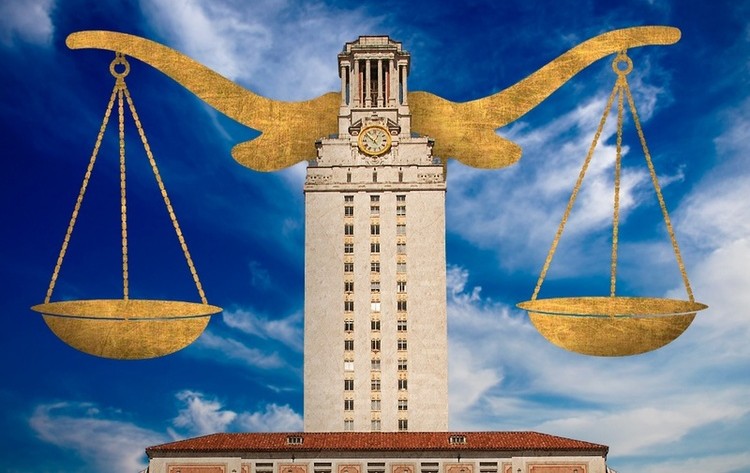 (This is the third of several short commentaries on recent Supreme Court decisions. see HERE and HERE)
(This is the third of several short commentaries on recent Supreme Court decisions. see HERE and HERE)
The Supreme Court’s recent decision in Fisher v. University of Texas has made it tougher for state universities to run their ethnic spoils systems. But not tough enough.
First, the background:
The Fourteenth Amendment requires states to extend “equal protection of the laws” to their citizens. The primary goal of the Equal Protection Clause was to stop states from discriminating against racial and ethnic groups. But the actual wording of the Clause covers more than just racial and ethnic discrimination.
As the proponents of the Fourteenth Amendment acknowledged, however, not all discrimination is bad. For example, it is good policy for the state to treat criminals differently from law-abiding persons. It may be good policy to take account of physical differences between men and women. A municipal theater putting on Shakespeare’s Othello might reasonably prefer a black man over a white woman (or over a white man) for the lead role.
But because the central purpose of the Equal Protection Clause was to limit state discrimination based on race and ethnicity, the Supreme Court tells us that it is particularly skeptical of that kind of discrimination. And usually it is.
The Court says that when a state law or regulation discriminates based on race, the law or regulation is void unless it passes “strict scrutiny.” Under the Strict Scrutiny test, a law or regulation must satisfy both of two criteria: (1) The purpose can’t be merely a garden-variety government purpose like, say, fiscal restraint. Rather, the justices must think it is “compelling” purpose, like national defense. (2) The state must prove that the law or regulation is “narrowly tailored” (or “necessary”) to accomplish the purpose. In other words, the state must prove that discrimination is the only way to accomplish the compelling goal.
In the landmark 1954 case of Brown v. Board of Education, the Court applied the Equal Protection Clause to ban state-run segregated schools. The Court held that segregated systems were inherently discriminatory. It rejected the argument that, given then-prevailing social conditions, segregation was necessary to assist the education of both whites and blacks.
But history tends to rhyme. Just as it was once fashionable to discriminate against blacks, a few decades later, it became fashionable among political liberals to discriminate in favor of blacks—and in favor of certain other key voting groups in the coalition of the National Democratic Party. So “progressive” university administrators began favoring those groups when hiring faculty and admitting students. For example, the University of Michigan law school granted preferences to applicants who were Hispanics, American Indians, or African Americans. If you were someone like, say, a Japanese-American, or a white Jew, or an Irish Catholic (all groups historically suffering from discrimination) then it was harder to get in.
People who play the modern preference game don’t admit to discriminating, of course. They employ euphemisms like “diversity” and “affirmative action.” They also argue that ethnically-diverse classrooms help education. (Never mind that there are respectable studies—including one by the liberal Brookings Institution—suggesting that student heterogeneity actually can make education harder.)
Anyway, the University of Michigan’s program was challenged in Grutter v. Bollinger (2003). Given the history and jurisprudence of the Equal Protection Clause, the program’s unconstitutionality would seem to be a slam-dunk. But Supreme Court justices are human. They are part of the legal elite, and they live in Washington, D.C. Most tend to be sympathetic to fashionable social attitudes.
So in the Grutter case, the Court upheld the Michigan law school program. The Court purported to apply strict scrutiny. It held that the educational benefits of a diverse classroom in a state law school were not just desirable goals but “compelling” ones. Thus, the purported benefits to state law schools were ranked up there with national defense. (A pretty silly conclusion given that some states do not think it necessary to even have a state law school.)
Nor did the Grutter court require the university administrators to prove that discrimination was necessary to achieve the purported benefits. Rather, the justices granted a special exemption, allowing university officials to discriminate largely at their own discretion. Thus, the Court watered down the Strict Scrutiny test.
Since the 1960s, the Supreme Court has a pattern of reaching liberal decisions on social issues. Even when those decisions prove unwise in practice, the Court seldom, if ever, overrules them. The most the Court does is chip away at them.
That’s what happened in Fisher:
The University of Texas was discriminating on racial and ethnic grounds in its student admissions. Fisher was an white, female applicant who had been excluded from admission. She did not attack the Grutter ruling that the “educational benefits from diversity” constituted a compelling purpose. But she did urge the Court to tighten the second prong so the test looked more like genuine Strict Scrutiny. In other words, she asked the court to jettison the exemption granting discretion to administrators. Fisher argued that state university officials, like other state officials, should be required to prove that racial and ethnic discrimination was the only way to obtain a diverse student body.
In a 7-1 decision, the Court agreed.
Two justices—Scalia and Thomas—said they favored ditching the notion that “diversity” is a compelling governmental purpose. In a particularly brilliant opinion, Justice Thomas demonstrated, by example after example, that the diversifiers’ “better education” argument was just a warmed over version of the “better education” argument once used to justify segregation.
- SCOTUS Defends Property Rights, but Raises Constitutional Questions - April 27, 2024
- The Truth about the Much-Abused Commerce Clause - February 28, 2024
- The Meaning of “Regulate Commerce” to the Constitution’s Ratifiers: An Update - February 7, 2024

